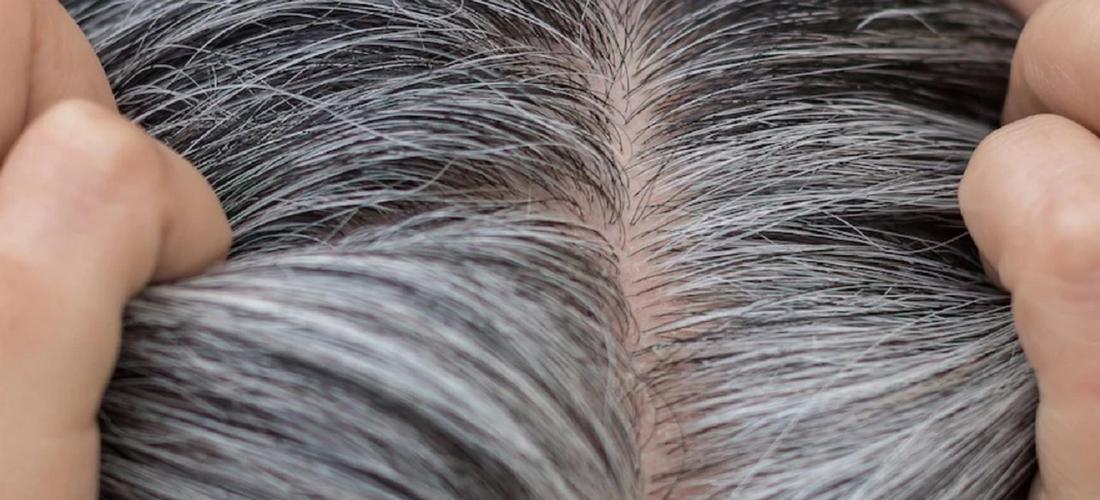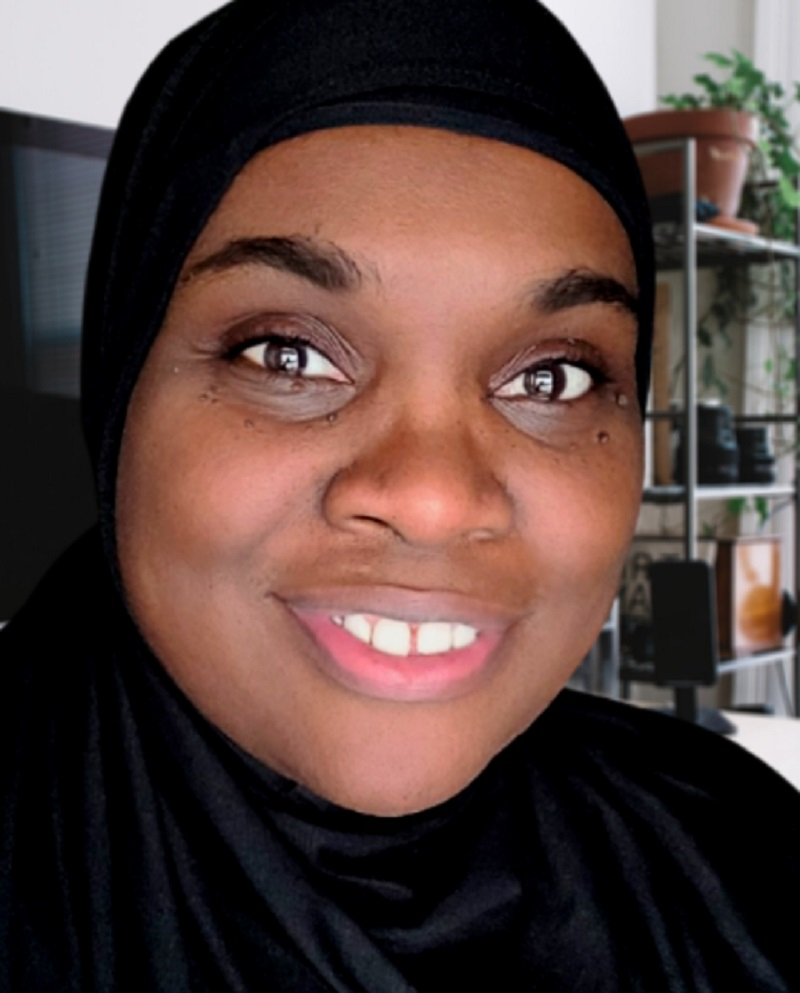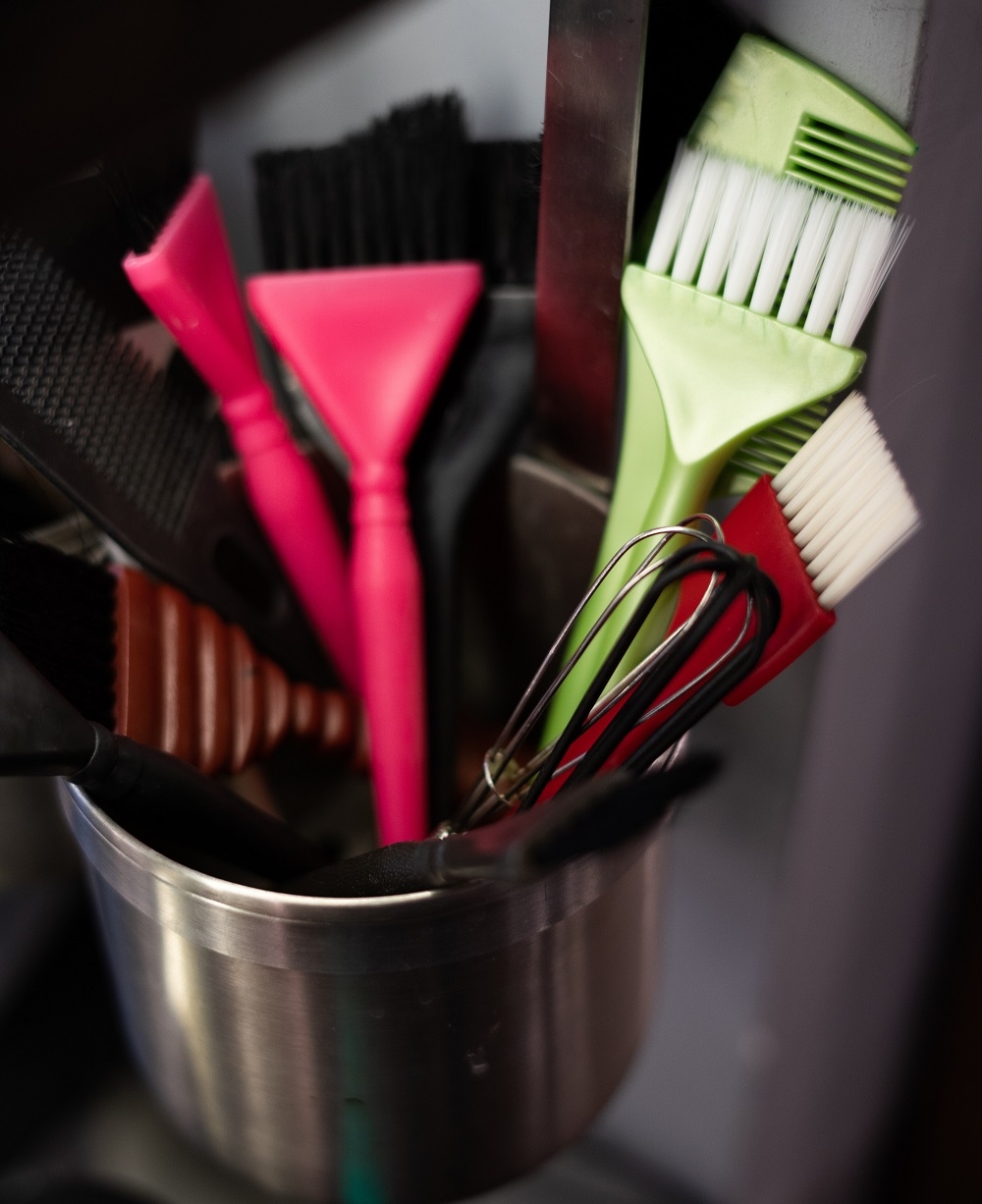Aging, Caring for Our Gray Hair & Understanding Our Muslim Womanhood
Lifestyle
|
May 19, 2022
|
8 MIN READ

Image source: Canva
I first noticed a few of them. Lustrous streams of silver mingled with my black coils when I parted my hair. At first, I did not mind them. They are a part of life, I told myself and went on with making myself pretty (or presentable, depending on the day) and continued with my day unbothered by the slight change to my coiffed, natural hair.
Over time, those subtle streaks became increasingly noticeable, with more filling my hair. When a bundle of gray brandished the middle of my forehead with the reality of my advancing age, I underwent an emotional spiral of identity and attractiveness. Sure, the outer world didn’t see my blooming grays due to my hijab, but I could see them, and those close to me could as well.
Did my gray hair make me an old woman who was no longer desirable? Their appearance coupled with the aches and pains of menopause and some personal heartache chipped away at my self-esteem and confidence. I was no longer sure of who I was.
I looked at photos of my younger self. She was surer of her place as a woman with the ability to birth children and attract a spouse, two of the main hallmarks of Muslim womanhood fed to us from the time we can discern our gender identity and faith. Many Muslim cultures trained women to believe that their primary contributions to the ummah are that of babymaker and the source of sexual gratification of men.
It may not be the same for every Muslim woman, but there is no denying that the messaging of guardian of the home, submissive reproducer and sexual object saturates many Islamic books, lectures and courses, which is not necessarily a bad thing. Allah (S) and His Messenger (saw) encourage us to have spouses and families, and the drive to gratify our sensual urges and have babies remain innate in many of us as women.
But – here’s the thing – the overriding Muslim communal zeitgeist tells women that they need to do these things to feel like women.
Child birthing was no longer a part of my life, Alhamdulillah. After numerous pregnancies and six beautiful kids, I was happy to say farewell to having babies. My hair color was a different story. Did the gray hair filtering itself into my crown and life mean I lost the final component of my “womanhood?” My hair got grayer, and duller, and I experienced increased breakage as the overall texture of my strands shifted to something new and scary. I felt like I was being tossed from the ship of Muslim womanhood and flayed emotionally, like a person thrown into the middle of the ocean without the ability to swim.

The author
After a lot of crying because of my diminishing black tresses, and a lot of whining to understanding friends, I realized that I had to find a positive way of looking at my graying hair and care for it, revealing its natural beauty and realizing that my womanhood wasn’t dependent on my ability to do (or not do) something (have babies) or look a certain way.
What Makes Hair Gray?
Gray hair appears when the pigment (melanin)-producing cells in the hair follicle die. Hair turns gray, silver or white depending on how much natural color, or pigment, remains. For example, when hair has lost all of its color, it turns white.
The major causes for gray hair are genetics and age. If your parents grayed at a certain age, then you may too. Some people may experience premature graying in their 20’s and 30’s. Race may also influence how early a person may start graying. According to one study, “Caucasians being mid-thirties, that for Asians being late thirties, and that for Africans being mid-forties. Caucasians and Asians typically experience damage to the distal hair shaft, while African-Americans see damage occurring closer to the hair root.”
Outside of genetics and age, there are many medical factors that can contribute to hair graying, including:
- Vitamin B12 deficiency
- Neurofibromatosis (also called Von Recklinghausen’s disease): This group of inherited diseases causes tumors to grow along nerves and abnormal development of the bones and skin.
- Tuberous sclerosis: An uncommon, inherited condition that causes benign tumors in multiple organs (including the brain, heart, kidneys, eyes, lungs, and skin).
- Thyroid disease
- Vitiligo: This condition causes melanocytes (the cells at the base of hair follicles that produce color) to be lost or destroyed — perhaps because the immune system "misfires" and attacks the scalp rather than an infection.
- Alopecia areata: a disorder in which patches of hair may be suddenly lost, especially the colored (non-gray) hairs. This may lead to "overnight" graying because previously present gray or white hairs suddenly become more obvious. When hair growth resumes, it may be white or gray, but colored hair may eventually return. [Source: health.harvard.edu]
Whatever the reason for the change in your hair’s color, it is important to appreciate the significance of gray hair in an Islamic context and to take proper care of gray hair to continue to slay and feel beautiful with or without hijab.
Gray Hair is a Sign of Allah (S)

Image source: RODNAE Production in Pexels
One of the things that helped me get a grip on the implications of gray hair springing from my body was the reminder that Allah (S) highlights gray hair as one of his signs in the Quran. He (S) says:
Allah is He Who created you in (a state of) weakness, then gave you strength after weakness, then after strength gave (you) weakness and gray hair. He creates what He wills. And it is He Who is the All-Knowing, the All-Powerful (i.e. Able to do all things). [Surah Rum, 30:54]
Gray hairs remind us that as part of Allah’s (S) creation, we have a life process that He (S) gave us to earn His (S) pleasure and mercy.
The Prophet Muhammad (saw) discouraged plucking gray hairs because of their importance for us in the hereafter, saying:
Don't pluck white hairs [from your beard], because any Muslim who grows white hair in Islam shall have it become a light on the Day of Judgment. [Abu Dawud]
We should suppress any instinct to pull out any gray hairs growing in wanted, “natural” places, like the hair on top of our heads, for example. However, anyone who follows Islamic guidelines and trim/remove armpit and pubic hairs (Yes, those hairs go gray too!) should continue to do so. Women who usually remove unwanted facial hair (upper lip, chin, between the eyebrows, etc.) should research and decide if they want to remove gray hair from those areas.
What About Coloring Gray Hair?
It is permissible to color gray hair. So if they are that unbearable, consider blending them with your hair coloring. Some sisters I know rely on henna as a natural dye for their hair, so that is an option you may want to research as well, if you’re interested in coloring your gray hair.
You may also want to fully embrace the gray and consider coloring all of your hair silver or gray. Talk with your dermatologist (if you have one) and professional hairstylist before making any decisions.
And Allah (S) knows best.
Omar Suleiman has a great video on the honorable place of age and gray hair:
In addition to reminding many of us that we are a little closer to meeting Allah (S), gray hairs serve as another sign of The Creator (S), power over us and all of His (S) creation. Those streaks of gray will also shine for us on a day when we will all search for light, placing them in a special position for us in this life that supersedes any societal connotations. So those of us blessed with them should do our best to care for them as the precious spiritual commodities they are.
How is Gray Hair Different?
Most of us take pride in our tresses and spend a lot of time, money and effort caring for them. When our hair undergoes changes, we will make whatever necessary adjustments to keep our hair as healthy and beautiful as possible. Gray hair is a major shift in the feel and appearance of one’s hair, requiring us to learn new haircare methods.
Gray hair can look and feel thinner because the hair cuticle changes. Your gray hairs may also become drier, coarser and more fragile because your hair is no longer producing the same amount of natural oils. Therefore, it is critical to protect delicate gray hair.
Like with the rest of your body, think about ways to keep your hair healthy as it transitions to the next stage of life. Let’s take a look at some ways to care for gray hair.
Gray Haircare Tips
Comparatively, African American hair may be more fragile, requiring special care. I spent most of my life caring for my hair and protecting it from breakage. So, as my hair grays, I have an arsenal of conditioner, moisturizers and oils at my disposal. I did have to learn which products helped and which hurt my gray hair and make the necessary adjustments to my daily hair care regimen and wash days. You will want to create a system to keep your graying hair healthy and stylish.
Don’t skimp on the nourishment. I know, hair is dead, but that doesn’t mean that you don’t need nutrients to promote healthy hair. Deficiencies in vitamins like B-6, B-12, biotin, vitamin D, or vitamin E can contribute to premature graying! Talk with your doctor about the best supplements to take for a healthier body and hair.

Image source: cottonbro on Pexels.
1. Select the right hair products. You may want to take inventory of your hair products and look out for ingredients like sodium lauryl sulfate, parabens, silicones and other things that may damage your gray hair. The shampoo, conditioner or styling product you love may be causing your grays harm. You will have to decide what to keep and what to ditch. Many of the same ingredients damage natural Black/African American hair, so I already have products free of them.
You may want to scan the hair care aisles at stores and hair supply shops. Talk to professionals to decide on what you want to use to make your gray hair the best it can be.
2. Protect your hair. Ultraviolet rays, styling heat and hair chemicals can damage gray hair. Think about new ways to style your hair to prevent damage to gray hair. In addition to hair products, you may need to adjust how you use heat to style your hair.
3. Be thoughtful of hijab materials. Fabrics like cotton and wool, polyester and nylon rob hair of essential moisture and cause breakage. Haute Hijab has a wonderful Silk-Blend Satin Underscarf that is protective of hair, and if you’re not into wearing underscarves, many of their hijab fabrics can be gentle on your hair, depending on the type of hair and gray hair you have.
It may take time to get comfortable, but aging is something we all are going through in a forward direction, and gray hair, menopause and other things are part and parcel of it. There is beauty and hikmah (wisdom) in all these stages of life, and our essential womanhood is ours through it all. It took me a little time to embrace this thinking, but I’m better for it. I pray you will feel this as well.
Subscribe to be the first to know about new product releases, styling ideas and more.
What products are you interested in?


